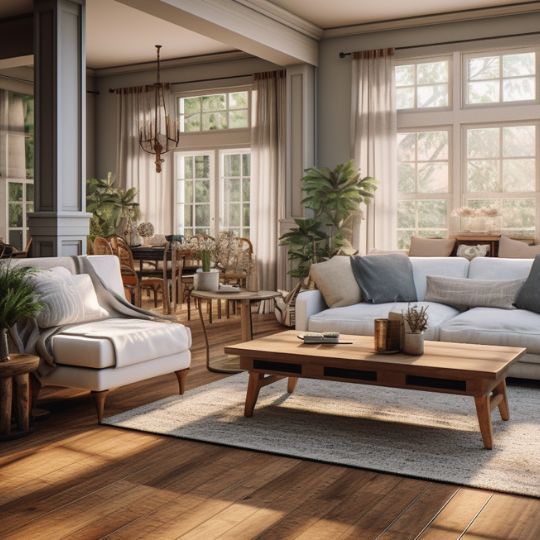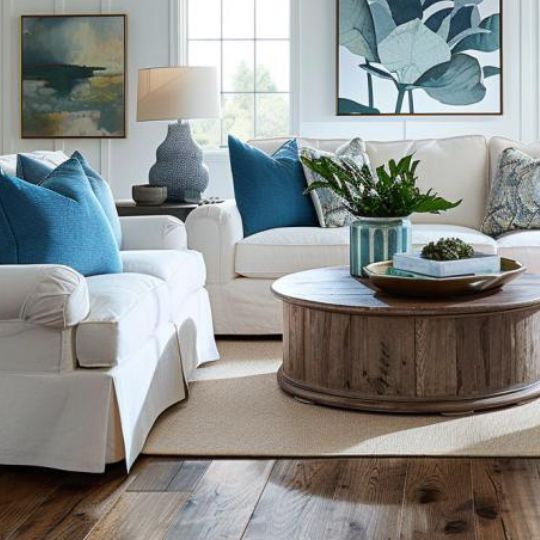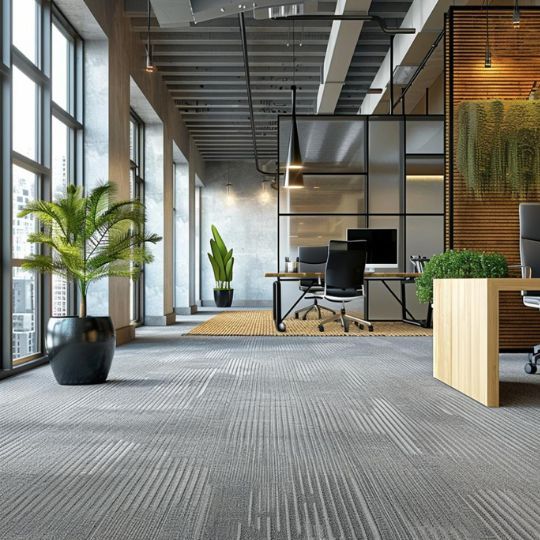Upholstery Nightmares: Professional Solutions to Common Problems

Maintaining the cleanliness and quality of your upholstered furniture is essential for prolonging its life, as well as your pleasure of it; however, upholstery maintenance involves more than just a quick vacuum or brush-up. This introduction will cover the top maintenance challenges that upholstery owners face, why professional cleaning and proper stain removal is important, and how to ensure maximum longevity for your investment.
The Top Challenges in Upholstery Maintenance
The top challenges that people face when undertaking upholstery maintenance are intricately varied and complex. The harsh environment in which the upholstery is exposed to can take its toll and require the use of multiple treatments and procedures to maintain the integrity of the material. Moreover, the lack of convenient material availability makes it more difficult to keep up with necessary repairs.
However, regular upkeep is a must if one desires to keep their furniture in top shape. Dusting, steaming, steam-cleaning, and spot-cleaning are all important techniques to keep on-top of. Furthermore, if it is leather or a faux-leather different products should be used and applied in different manners to keep the material in the best condition possible.
In addition to the regularised maintenance, emergencies can occur that require a professional to be present. Dog chewing, rips, burns, and stains can all greatly lessen the life of the upholstery and immediately requires the attention of a professional to repair and protect the material. For instance, a professional is needed to apply a vinyl repair to any overall damage or abrasions on the material.
There are general tips that can aid an individual in an attempt to slow down the wear of the upholstery: these include, the use of slip covers, using furniture sprays to help prevent fading and cracking, and avoiding the Simplicity of harsh chemicals or abrasive materials when cleaning. Similarly, an understanding of what type of material is necessary for covering a piece of furniture is also important.
As a result, a complex understanding of the necessary techniques of both maintenance and emergency repair is required to keep upholstery in the best condition possible. Each material type and often each individual piece of furniture is different and an intricate understanding of the differences is essential to the well-being of the furniture. Consequently, multiple levels of protection are necessary to ensure a comfortable and long-lasting life for the furniture.
Why Professional Upholstery Cleaning Matters
Upholstery cleaning is an important task to ensure your home remains clean and healthy. Properly cleaned fabrics and furniture will help protect your family from unhealthy allergens, reduce the amount of dust, and keep your furniture looking great. Moreover, professional upholstery cleaning can provide a deep and thorough cleaning that regular vacuuming and spot-cleaning methods simply cannot. This deeper clean gets rid of allergens trapped deep in the fabric and reduces the amount of dirt and dust that builds up over time.
However, many people fail to recognize the importance of regular professional upholstery cleaning. In contrast to people’s conceptions, professional upholstery cleaning is more than just giving the fabric a quick passing-over with a vacuum cleaner. Professional cleaners use advanced equipment and techniques that can clean and deodorize the fabric, helping to reduce or eliminate warning signs of dirt and unpleasant smells. Moreover, this professional attention can help protect fabrics from everyday wear and tear.
Professional upholstery cleaners have specialized cleaning solutions that are designed to penetrate below the surface of the fabric, deep cleaning the fibers and providing a longer lasting clean. For instance, steam cleaning is a great option as it not only deep cleans but also sanitizes fabrics. Consequently, with regular professional cleaning, you will also help extend the life and appearance of your upholstery for years to come.
Finally, professional upholstery cleaning is more cost-effective than buying new upholstery. Regular maintenance and professional upholstery cleaning services from experienced cleaners can help protect your investment and extend the life of your upholstery. Similarly, professional cleaning may be able to remove certain stains that may otherwise not be possible to remove. Therefore, professional upholstery cleaning is an important service to keep your furniture looking and feeling great.
Dealing with Stubborn Stains: Expert Tricks
Dealing with stubborn stains can be a daunting and lengthy task, but with the right techniques and tools, it is entirely possible to remove them quickly and efficiently. The first step in stain removal is to identify the type of stain, as this will determine the detailing materials and methods to use. Some of the most common types of stains are protein-based, oily-based, and dry-soil based.
In the case of a protein-based stain, such as that from grass, it typically requires a two-phase process. Initially, the stain should be absorbent with paper towels or a dry cloth. Furthermore, this must be done before any water or detergent is applied. Once the area is dry, a detergent and lukewarm water can be used to finish the job.
On the other hand, oily-based stains, such as those from salad dressing or foods cooked in oil, require a different approach. These typically require a pre-treatment from a chemical solution, such as a commercial degreaser, which works to break down the oil. After this, the area must be rinsed with water and a detergent applied.
Dry-soil based stains, such as dirt and makeup, require a different tactic and materials. For these types of stains, dry cleaning solvents and agents should be used. These should be sprayed onto the area and lightly scrubbed to break down the particles. After this, the area should be rinsed with water and a detergent applied.
Basic household products such as baking soda, vinegar, and lemon juice can be used to treat certain types of stubborn stains. For instance, baking soda is excellent at absorbing oil-based stains. Similarly, lemon juice and vinegar can be used to remove protein or oily-based stains, as they act as a natural bleaching agent and detergent. As a result, these common household items are an ideal resource for stain removal.
By understanding the types of stains and the necessary methods and materials for each, individuals are well equipped to treat any stubborn stain that comes their way. With knowledge of the basics and the right tools, anyone can efficiently and easily remove an unsightly stain. Consequently, the task of dealing with stubborn stains does not have to be a daunting one.
Upholstery Longevity: Protecting Your Investment
Upholstery represents an investment in your home’s comfort and aesthetic appeal. The longevity of your upholstery is determined by the combination of quality of material, construction, and maintenance. Therefore, understanding the best practices for each of these aspects can help you to ensure your upholstered furniture can stand up to the tests of time and use.
Quality of material is one of the most significant factors in determining how long your upholstery will last. When choosing fabric for your furniture, look for items of a higher quality that are designed to be durable, such as heavier fabrics. Similarly, selecting leather or vinyl, which have inherent durability, can also be beneficial in protecting your investment. Furthermore, choosing a fabric with a tighter weave or larger fibers, such as wool tweed, can help to reduce the impact of wear and tear.
In addition to material, how the furniture is constructed is essential in determining its life span. The quality of the upholstery frame, or how the frame is designed, should be of the highest quality possible. Reinforced frames with stapled joinery are going to be stronger than ones that are glued together. On the other hand, certain parts of the frame, such as screws and glides, may need periodic tightening or replacement to maintain the furniture’s integrity.
Routine maintenance is also essential in maintaining the longevity of your upholstery. Regularly vacuuming and spot cleaning fabric can help to reduce dust, dirt, and other debris that can accumulate and cause damage. Similarly, leather needs to be treated periodically with specialized leather cleaners and conditioners. A final important maintenance step is to rotate the cushions on the furniture, so use occurs evenly. As a result, one cushion does not become too worn or show signs of fading, while another remains like new.
Preserving your upholstery investment involves taking a holistic approach to quality of material, construction, and maintenance. Considering each of these areas can help you make smart decisions when selecting upholstery and ultimately keep your furniture looking and feeling great for many years.
Final Takeaways
Upholstery maintenance is a difficult, but necessary endeavor for any furniture owners. Professional upholstery cleaning is the best way to ensure that your investment in your furniture is prolonged and kept in the best condition possible. Stubborn stains can be difficult to remove, but with expert advice and tips, many can be successfully eliminated or limited. Lastly, long-term upholstery protection is essential to preserving your furniture and ensuring that you get the most of your items, as well as making it easier to maintain them. With all of this in mind, it is clear to see why upholstery maintenance is such an important part of furniture ownership.
Frequently Asked Questions
Can professional cleaners remove all types of upholstery stains?
No, professional cleaners may not be able to remove all types of upholstery stains. Certain types of stains such as ink, proteins (like blood or pet stains), and dyes may require specific or targeted treatments that may not be available with all professional cleaners.
How often should I have my upholstery professionally cleaned?
It is recommended to professionally clean your upholstery every 12 to 18 months depending on usage.
What’s the difference between DIY upholstery cleaning and professional services?
DIY upholstery cleaning is when you use products found at the store or online to clean your upholstery on your own. Professional services involve hiring professionals to come in and use specific fabrics and solutions to clean and protect upholstery fabrics. Professional services often ensure that treated fabric will look and feel cleaner for a longer period of time than DIY cleaning methods, as well as providing additional peace of mind due to their experience and knowledge of the best cleaning methods for certain fabrics.
Can I prevent upholstery stains in the first place?
Yes, you can prevent upholstery stains in the first place! The key is to act quickly whenever a potential stain appears. Immediately blot up the liquid with a dry, clean cloth and apply a fabric cleaner or stain remover. Additionally, make sure to use protective coverings, such as slipcovers or fabric protectants, on upholstered furniture to help guard against potential stains.






